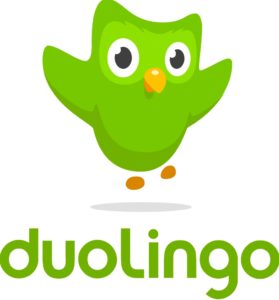Resource Review: Duolingo Korean
 I had heard a lot about Duolingo from other language learners who were using it to study a variety of languages. When I started the Couch to Korean Challenge, Duolingo did not offer Korean, but they have recently added it to their list of languages. So I gave it a try this week, and it was a very disappointing experience.
I had heard a lot about Duolingo from other language learners who were using it to study a variety of languages. When I started the Couch to Korean Challenge, Duolingo did not offer Korean, but they have recently added it to their list of languages. So I gave it a try this week, and it was a very disappointing experience.
I was immediately skeptical of the nonsense marketing on the Duolingo Korean website: “Learn Korean in just 5 minutes a day with our game-like lessons. Whether you’re a beginner starting with the basics or looking to practice your reading, writing, and speaking, Duolingo is scientifically proven to work.” Anybody who studies a language for just 5 minutes a day will never “learn” that language. So Duolingo lost their credibility on the first page. But I wanted to at least kick the tires on the Duolingo app, so I installed it and took the placement test.
I answered all the questions correctly on the placement test, and the Duolingo app determined from this that I am at “Level 7” in Korean But nowhere in the app does it explain what that means. How many levels are there? And really, how can you accurately assess a student who didn’t miss any questions? Since I answered all the placement questions correctly, shouldn’t the app either present more placement questions or else assume I know the language well enough that I do not need to study this language at all? To try to calibrate what “Level 7” means, I also took the placement test for Duolingo German; I would estimate my German fluency to be at least 90%. I answered all the placement questions correctly in the German test, and the Duolingo app placed me in Level 7 for German also. For fun I completed a couple of the German units, after which the Duolingo app added a “9% Fluent” to my German status. So I still have no idea what “Level 7” means, but clearly Duolingo has not idea at all how to score “fluency” for language learners.
It only got worse from there. The app determined that I should start my Duolingo Korean learning experience with the unit “Adverbs 1.” I completed Lessons 1 and 2 of this unit, then in the middle of Lesson 3, the app crashed. I restarted the app, and it crashed again (and again and again) during Lesson 3. The app will not allow me to even attempt any other units until I finish the “Adverbs 1” unit, telling me whenever I try another unit that I must “Complete open skills to unlock this.” Thus ends my very poor experience with the Duolingo Korean app.
The limited view I had from the placement test and 2 lessons gave me a glimpse into the potential of the Duolingo approach. The test and lessons mostly consisted of translating written sentences, both Korean into English and English into Korean. It seemed well designed and executed for the most part, with some irritating limitations (capitalization, word order, inflexibility with synonyms, and repeated sentences). However, the lack of clarity on the levels/fluency and especially the instability of the app make it impossible to investigate any further. At this point I will wait for a better, more stable version of the Duolingo Korean app before providing a full review of its features.
Share this Lexplorers post:











The non-app version is better, in my opinion, at least for other languages I have tried. Not necessarily in the level placement, but in the overall experience. I just looked and the web version of Korean is still 94% “hatched” — not available. I just tried the test on the web site in German, and I managed to pass out of 2 skills only, which put me at level 1. Through diligent practice in the past I got to level 16 and 12 on a couple other languages, but probably I couldn’t get that high through a placement test… An interesting experience is trying out “English for Spanish speakers” or something similar — another interesting way to test how much you know of the language.